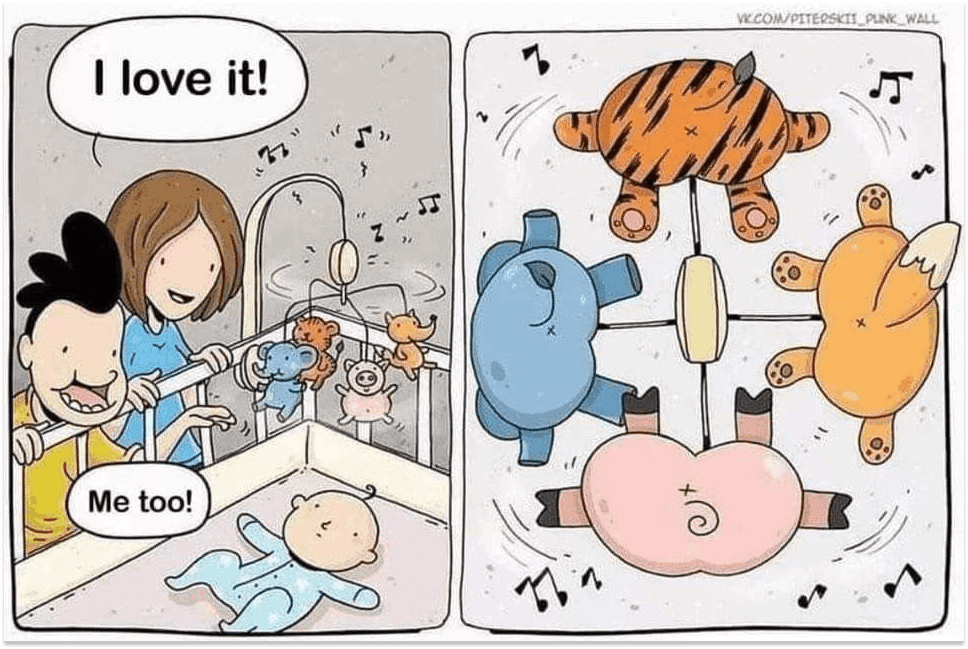
わが子から学ぶ:子育てとデザインにおけるUXの原則
※この記事は英語のオリジナル記事(末尾に掲載)をChat -GPTで日本語訳、微修正して作成しています。ややぎこちない日本語をお楽しみください。
こんにちは。UI/UXデザイナーのAnnaです。
UI/UXデザイナーであり、また2歳の子供の母親でもある私にとって、ユーザーエクスペリエンス(UX)デザインの原則と子育てには驚くほど共通点があることに気付かされます。この記事では、私が子育てから得た教訓と、私たちデザイナーの仕事の共通点を探ります。
ユーザー視点を理解する

2歳の子供との時間を過ごす中で、彼らの視点から世界を見ることの重要性を実感しました。ベビーポスターを目の高さに掲示したり、おもちゃを手の届く範囲に配置することが必要です。デザインにおいても、ユーザー視点の理解することが重要です。
例えば、デジタル製品をデザインする際には、ユーザーが利用している画面サイズやOSを把握することが重要です。デザインをそのデバイスに完璧に合わせ、重要なボタンがシステムボタンに近づきすぎないようにすることで、より良いユーザーエクスペリエンスを提供します。
私たちが子供のニーズに対応するように、ユーザーのニーズと能力を考慮して魅力的なエクスペリエンスを作り出す必要があります。
シンプルさが鍵

子供は生まれながらにして探求心や学ぶ意欲がありますが、複雑なことには対処できないので、壁にぶつかることがあります。そのため、良いユーザーエクスペリエンスを実現するためにはシンプルさが鍵となります。
幼児はシンプルで直感的なインタラクションを好みます。同様に、ユーザーも無駄のない直感的なインターフェースを評価します。例えば、複雑なタスクを管理可能なステップに分割します。1ページに多くのフォームを表示する代わりに、一つのステップだけを表示します。必要な情報のみを見せ、何をすれば良いかを明確にすることで、ユーザーが効率的にタスクをこなすサポートができます。
楽しさとフィードバック

幼児の効率的な学びに欠かせないのが遊びと適切なフィードバックです。この原則はユーザーエクスペリエンスにも応用できます。
インタラクティブなアニメーションや遊び心のあるマイクロインタラクションなど、楽しい要素を追加することで、退屈な作業さえも楽しいものにすることができます。クリエイティブなローディングアニメーションや魅力的なプログレスバーなどは、待ち時間を楽しいひとときに変えることができます。エンプティステートや完了画面も抜かりなくデザインすることにより、、日常的なタスクも楽しく魅力的なものになります。私たちのデザインにも遊び心を取り入れ、毎日の業務体験に喜びをもたらしたいですね。
インクルーシブに

母親である私は、公共の場で保護者が直面する問題を目の当たりにしました。利用しにくい施設や男性用トイレにおけるおむつ交換台がないことは、ストレスや阻害感を生むことがあります。
デザイナーとしも、インクルーシブななデザインを通じてユーザ体験に変化をもたらすことができます。調整可能なフォントサイズの実装、画像ではなく明瞭なテキストの使用、レスポンシブデザインの採用は、よりユーザーフレンドリーなエクスペリエンスを作り出します。また、高齢者など特定のユーザーグループのためにデザインする際には、スタイルの美しさよりも彼ら特有のニーズを優先し、彼らにとってより簡単な操作性を実現することが重要です。
繰り返しと適応

幼児は適応力が非常に高く、つまずいたり転んだりしても、すぐに立ち上がります。UXデザインにおいても同じマインドセットを取り入れることができるのではないでしょうか。
仮説を立て、さまざまなアプローチを試し、フィードバックを集め、そのフィードバックに基づいて改善をを行うことが重要です。ユーザーの意見から学び、デザインを絶えず改善することで、真にユーザに共感したエクスペリエンスを作り出すことができます。
以上が私が子供から学んだ貴重なデザイン原則です。子供ならではの視点に立つこと、シンプルさや楽しさ、インクルーシブさを重視し、彼らの適応力を見習って仮説検証を繰り返すことで、私たちは魅力的でハッピーなユーザーエクスペリエンスを作り出すことができます。
インスピレーションあふれる、子供の知恵と魔法をデザインに取り入れてみてはいかがでしょうか。
Lessons from My Toddler: UX Principles in Parenting & Design
As a UI/UX designer and a mother of a 2-year-old, I've discovered that the principles of user experience (UX) design are remarkably similar to my journey as a parent. Join me as I share the lessons I've learned from my toddler and explore how they apply to our work as designers.
Let's dive in and uncover the amazing parallels between parenting and design!
See Things from Their Perspective
When spending time with my little one, I realized how important it is to see the world from their point of view. Hanging baby posters at eye level , setting small furniture and placing toys within their reach became essential. This taught me the value of understanding the user's perspective in design.
For example, when creating a digital product, it's crucial to know what screen size and operating system most users have. By adapting the design to fit their devices perfectly and ensuring important buttons aren't too close to system buttons, we create a better user experience.
Just like we cater to our toddlers' needs, we must also consider the needs and abilities of our users to create engaging experiences.
Keep It Simple
Toddlers are natural explorers and learners. However, they can easily become overwhelmed by complexity, hindering their ability to engage and learn effectively. This is where simplicity becomes the secret sauce for a successful user experience.
Toddlers love simplicity and direct interactions. Similarly, users appreciate intuitive interfaces that are clutter-free and easy to navigate.
To achieve this, we break down long processes into manageable steps. Instead of overwhelming users with a lengthy form on one page, we guide them through one step at a time. By only asking for essential information and making it clear, we help users accomplish their goals more efficiently.
Fun and Feedback
Babies learn best through play and instant feedback. This principle also applies to user experiences.
By adding delightful elements like interactive animations or playful microinteractions, we can make even mundane tasks enjoyable. Creative loading animations and engaging progress indicators can turn waiting times into entertaining moments.
And with well-designed empty states and success screens, even routine tasks can be fun and engaging.
Let's inject playfulness into our designs and bring joy to everyday experiences.
Inclusivity Matters
Being a mother has shown me the challenges caregivers face in public spaces. Inaccessible facilities and the lack of changing stations in men's restrooms can be frustrating and exclusionary.
As designers, we can make a difference through inclusive design. Implementing adjustable font sizes, using plain text instead of images, and adopting responsive design create a more user-friendly experience. And when designing for specific user groups, like the elderly, we prioritize their needs and make things easier for them.
Iterate and Adapt
Toddlers are masters of adaptability. They stumble, fall, and get right back up. In UX design, we should embrace the same mindset.
Making hypotheses, trying different approaches, gathering feedback, and iterating based on that feedback is crucial. Learning from mistakes and continuously improving our designs based on user input allows us to create experiences that truly resonate.
My toddler has reminded me valuable design principles. By embracing their perspective, simplicity, fun, inclusivity, and adaptability, we can create user experiences that captivate and delight our audience.
So let's draw inspiration from the little ones in our lives and infuse our work with the magic of toddler wisdom.
この記事が気に入ったらサポートをしてみませんか?
